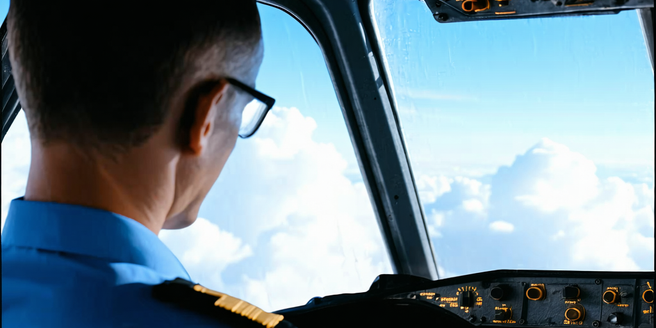
What is Barometric Pressure?
Barometric pressure, also known as atmospheric pressure, is the force exerted by the weight of air in the atmosphere. It is measured in units such as millibars (mb) or inches of mercury (inHg). The pressure is highest at sea level and decreases with altitude. In aviation, understanding barometric pressure is crucial as it directly impacts altitude readings and weather predictions. Pilots rely on these readings to ensure safe flight operations and navigation. Barometric pressure helps in predicting weather changes, influencing flight planning and safety. A deviation in pressure readings can lead to errors in altitude measurement, significantly affecting aircraft performance. Therefore, accurate measurement and interpretation of barometric pressure are essential in the aviation industry.
How Barometric Pressure Impacts Flight
Barometric pressure significantly influences aviation by affecting how altimeters measure altitude. Since these instruments rely on air pressure to determine elevation, any fluctuations can lead to incorrect altitude readings. Lower pressure at higher altitudes leads pilots to adjust their controls to maintain safe and efficient flight paths. Also, sudden changes in pressure, possibly indicative of strong winds or storms, can necessitate route adjustments or altitude changes for safety. Moreover, barometric pressure assists in weather forecasting, which is crucial for flight planning. Knowledge of pressure impacts wind speeds and turbulence, ensuring that pilots are well-prepared for various atmospheric challenges during flights.
Instruments Used to Measure Barometric Pressure
In aviation, barometers are the primary tools for measuring atmospheric pressure. There are several types of barometers used, including mercury barometers and aneroid barometers. Mercury barometers use a column of mercury to measure pressure, with changes in mercury levels indicating pressure shifts. Aneroid barometers, on the other hand, use a small, flexible metal box called an aneroid cell. As the surrounding air pressure changes, the cell expands or contracts, and this movement is translated into pressure readings. Altimeters, which are crucial in aviation, are a form of aneroid barometer specifically calibrated to provide altitude readings. These devices ensure pilots have accurate pressure data to make informed decisions during flights.
Understanding Altimeter Settings in Aviation
Altimeter settings are vital for accurate altitude readings in aviation. An altimeter measures atmospheric pressure to provide an aircraft’s elevation above sea level. However, pressure varies with weather changes, so pilots need to regularly update altimeter settings based on current conditions. This is done by setting the altimeter to the pressure of a known location, commonly the airfield they are operating from or the destination. If not adjusted, incorrect altimeter settings can lead to altitude errors, posing safety risks, especially during takeoff and landing. It is essential for pilots to receive accurate pressure information from air traffic control or onboard systems, ensuring correct altimeter configurations.
Challenges of Barometric Pressure in Different Weather Conditions
Weather conditions can greatly affect barometric pressure, presenting challenges for aviation. High pressure typically indicates good weather, while low pressure can signal storms or poor conditions. Rapid changes in pressure, such as those during a frontal passage, can result in turbulence, altering flight plans. Pilots must be adept at interpreting pressure changes for safe navigation. For instance, a sudden drop in pressure might suggest a developing thunderstorm, requiring immediate attention and potentially a change in course to avoid turbulence. Understanding these variations and their implications helps pilots make informed forecasts about potential weather impacts on the flight.
Future Technologies and Innovations
As aviation technology advances, so too do the methods for measuring and predicting barometric pressure. The aviation industry constantly seeks ways to revolutionize flight safety and efficiency. Future innovations include integrating artificial intelligence to better analyze and predict pressure changes, enhancing safety and efficiency. Advanced sensors are being developed to provide real-time pressure data to pilots, allowing for more precise altitude readings and improved weather forecasting. Additionally, satellite-based systems are being explored to offer global pressure measurements, assisting in the planning and routing of long-haul flights. These innovations aim to facilitate safer and more reliable air travel by mitigating the risks associated with pressure variability.
